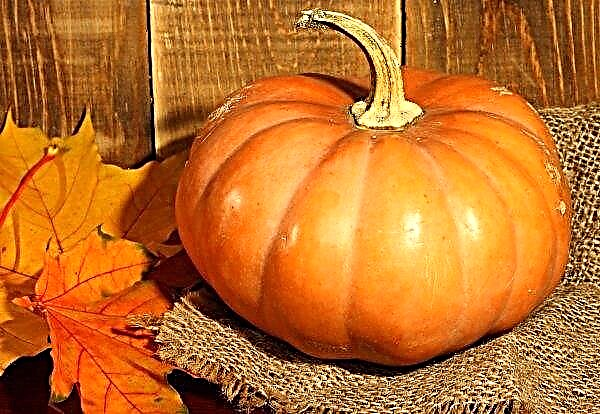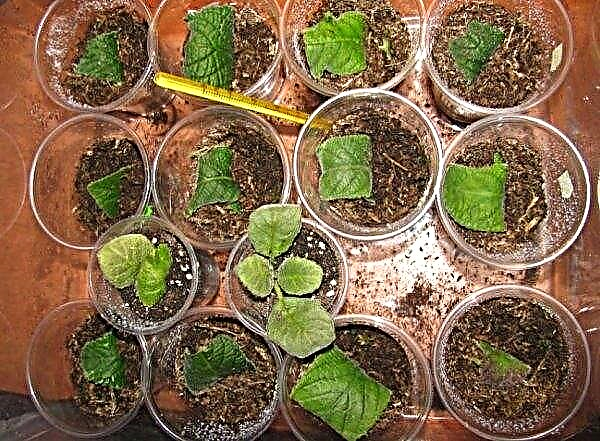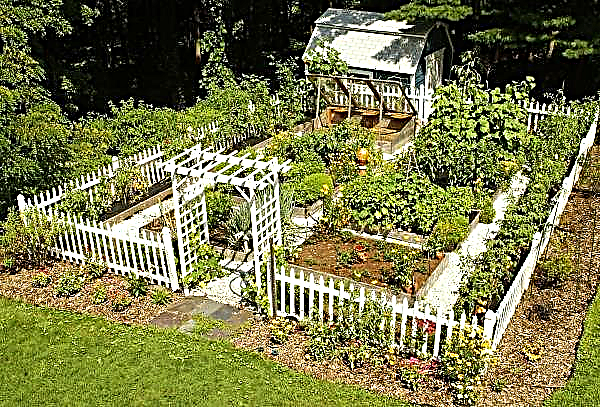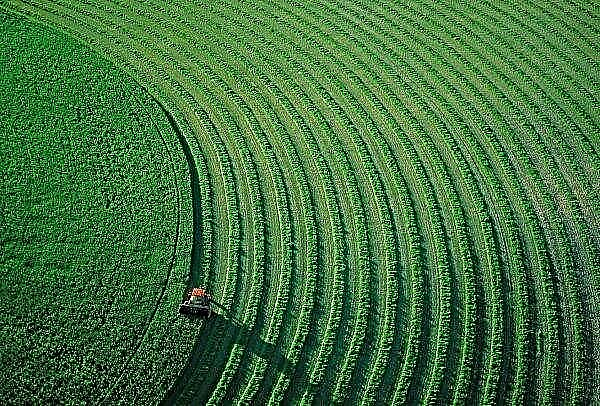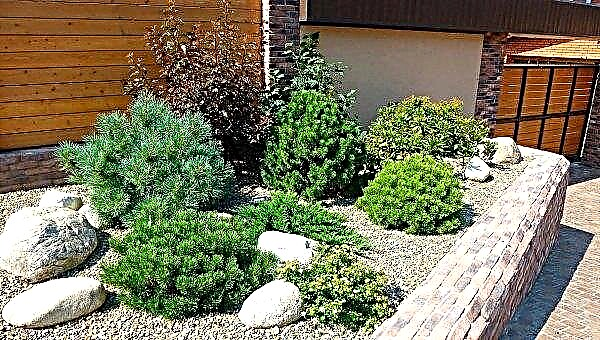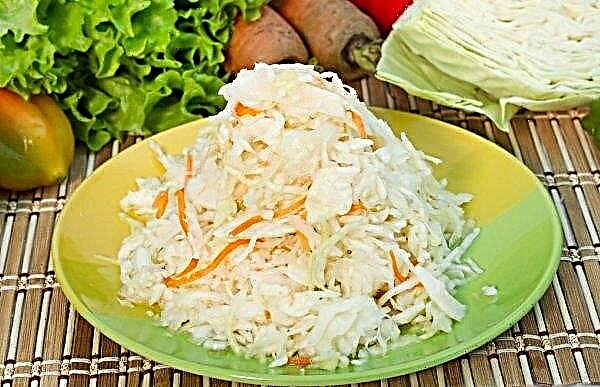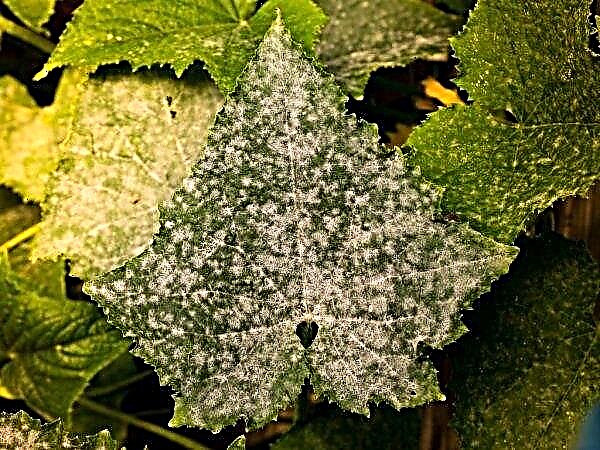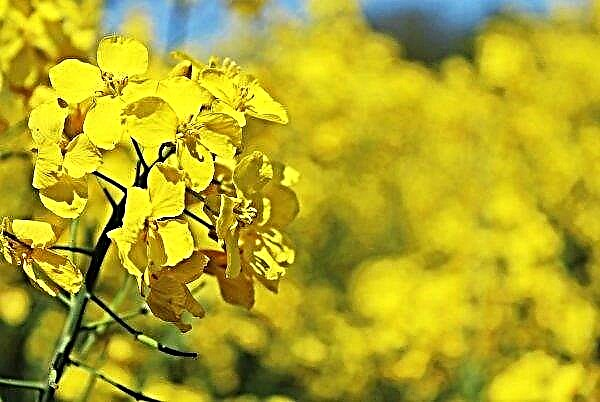Siberian cedar, planted in a summer cottage, will not only be an excellent addition to the garden, but will also fill the air with healthy phytoncides. Read about how to grow a tree and how to care for it.
Description of Siberian cedar
Siberian cedar pine (Siberian cedar) is a representative of the genus Pine and belongs to the family Pine. The evergreen, coniferous tree is capable of reaching up to 45 m in height. Crohn - multi-peaked with thickened branches can have a diameter of up to 2 m. The trunk is straight, with scaly bark. Perennial shoots are brown in color, long red hairs are observed on their surface.
The needles are dark green in color, soft to the touch, with a sharp point at the end. It grows in bunches of 5 pieces, in the context of a trihedral. The root system is the core, with many outgoing roots. With the growth of the tree, the anchor root system develops, which ensures the stability of the plant, because it deepens 2 m into the soil.
Important! The fruiting of Siberian cedar begins in the 60th year after planting with an interval of 3 to 10 years.
The cones are large, oval in shape, at the beginning of growth they have a purple hue, they become brown as they ripen. Their diameter is up to 5 cm, and their length is up to 13 cm. Cones ripen throughout the year, after which they crumble from the tree. Each fruit can contain from 30 to 150 pine nuts. Seeds have a length of 1.5 cm and a diameter of up to 1 cm. Harvest from one adult tree reaches 13 kg.
How to grow in the country
Growing Siberian cedar is a rather complicated process, because the plant is demanding on the choice of place and soil. Also, you should follow the regime of watering and care for the trunk circle.
Cedar is planted in the spring before the swelling of the kidneys or in the fall after leaf fall. The landing area is spacious and well-lit. You should not choose a place with the risk of flooding during rains and melting snow, because this will lead to suppuration of the rhizome and death of the plant.Did you know? Siberian cedar is a long-liver, its age can reach 500 years or more.
 For planting, 9–11-year-old seedlings with a well-developed root system are chosen. When choosing a plant, pay attention to the condition of the branches and needles. They should not contain traces of diaper rash or dryness.
For planting, 9–11-year-old seedlings with a well-developed root system are chosen. When choosing a plant, pay attention to the condition of the branches and needles. They should not contain traces of diaper rash or dryness.
What soil does Siberian cedar like?
Siberian cedar loves well-drained, loose soil. It is grown on loamy or chernozem soils with high moisture transmittance. Do not plant a tree on dry, calcareous soils. This arrangement of the plant can lead to a disease of chlorosis, which will manifest itself in the form of yellowing needles and slow down the growth of cedar.
How to plant Siberian cedar
In preparing the landing pit, the size of the root system should be taken into account, which should not bend at the time of landing. The seedling must be transferred to a hole with an earthen lump. Such manipulation will allow the tree to quickly adapt to new conditions.
Step-by-step instructions for landing:
- Dig a hole at least 1 m deep and 1.8 m wide. If the root system is larger in volume, then the hole is dug deeper and wider.
- Pour a nutrient substrate prepared from the upper fertile layer of soil, peat and sand mixed 1: 1: 1 to the bottom of the hole, to which 10 compost buckets are added.
- The embankment from the substrate is formed into a hill.
- Next, carefully plant a seedling together with a small lump of earth.
- To the top of the hole, the nutrient substrate is poured and compacted tightly.
- Pour 20-30 liters of water and mulch with compost.
Did you know? Pine nut cream is 3 times more nutritious than cow cream, because they contain 79% fat.
Caring for Siberian cedar
The plant needs regular watering. It is produced 1 time per month if it rains or 1 time in 10 days if the weather is dry. Each tree is watered with 30 l of water, which is pre-defended for 2 days.
After rains and watering, the soil near the trunk is loosened to a depth of 5-10 cm. The procedure will avoid the formation of a dense crust on the soil surface.
Important! When caring for cedar, it is important to observe the irrigation regime and prevent drying out of the earthy coma, because the plant is susceptible to a disease such as chlorosis, which develops due to lack of moisture.
Mulching is carried out once in 1–1.5 months, for which peat is taken as material. Fertilization is carried out 3 times: in May, June and July. Under each tree, 10 l of a solution of: 20 g of potassium sulfate and 10 l of water are added.

Growing recommendations
Growing cedar is a rather troublesome affair. Therefore, for beginner gardeners, you can use these recommendations:
- In late autumn, a mulching procedure is mandatory, because it helps to preserve heat in the rhizome, and also stimulates the growth of additional roots.
- In the dry period, it is necessary to irrigate the crown of the young cedar 1-2 times a month. This procedure will remove dust from the tree and will contribute to the improvement of gas exchange in the stomata of the needles.
- The soil near this plant is loosened only on the surface. Deep digging of the site is not permissible, because the roots of the tree are close to the surface of the earth.
- You can not trim the side shoots of cedar, because the more needles on it, the faster it develops.
- Despite the fact that cedar is a self-pollinating plant, it is recommended to plant several more varieties near it for better productivity.
- When growing a cedar garden, an interval between trees of up to 8 m should be observed.

Siberian cedar is a beautiful and healthy plant, which is famous for its delicious fruits and the ability to release phytoncides into the air, purifying it from pathogenic bacteria. Planting it is a rather complicated matter. Therefore, before engaging in its cultivation in the garden, you should carefully familiarize yourself with the botanical features of the tree and the rules for caring for it.



